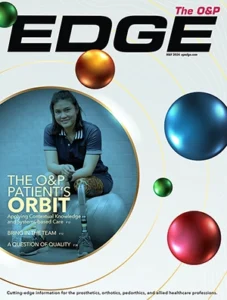In a study published online in the August issue of Gait & Posture, researchers from the University of Nevada, Las Vegas, characterized the spatio-temporal, joint kinetic, and mechanical responses of a custom carbon-fiber AFO during locomotion for patients with Charcot-Marie-Tooth (CMT) disease.
Eight volunteers were fit with custom AFOs. Three of the AFOs included eight strain gauges to measure surface deformation of the shell during dynamic function. After an accommodation period of at least ten weeks, bilateral plantarflexor and dorsiflexor strength was measured. The participants then walked at their preferred pace over a force platform and instrumented walkway while being tracked with a 12-camera, motion capture system, repeating the test for braced and unbraced measurements of strength, spatiotemporal, and lower-limb joint kinetic parameters.
According to the study, the research demonstrated that with the AFO, patients walked faster and with increased stride length and frequency; with increased velocity, maximum joint moments shifted from the hip to the ankle and knee; there was a positive relationship between ankle joint strength and walking velocity; and the load on the tibial shell during propulsion was the typical mechanism employed to increase velocity.




